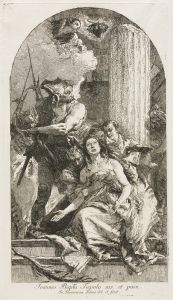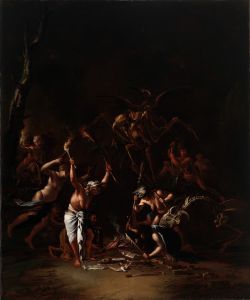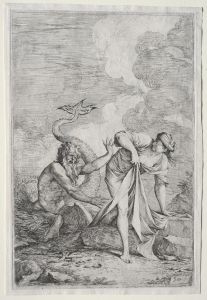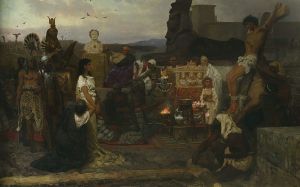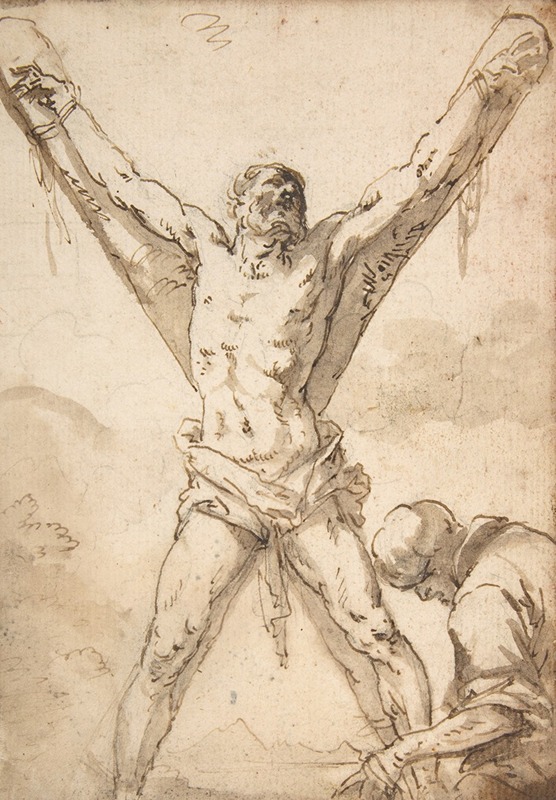
Martyrdom of St. Andrew 1615–73
A hand-painted replica of Salvator Rosa’s masterpiece Martyrdom of St. Andrew 1615–73, meticulously crafted by professional artists to capture the true essence of the original. Each piece is created with museum-quality canvas and rare mineral pigments, carefully painted by experienced artists with delicate brushstrokes and rich, layered colors to perfectly recreate the texture of the original artwork. Unlike machine-printed reproductions, this hand-painted version brings the painting to life, infused with the artist’s emotions and skill in every stroke. Whether for personal collection or home decoration, it instantly elevates the artistic atmosphere of any space.
Salvator Rosa, an Italian Baroque painter, is known for his dramatic and often unconventional works that span various subjects, including landscapes, portraits, and historical scenes. One of his notable works is the "Martyrdom of St. Andrew," created between 1615 and 1673. This painting reflects Rosa's unique style, characterized by its dynamic composition, emotional intensity, and dramatic use of light and shadow.
The "Martyrdom of St. Andrew" depicts the martyrdom of Saint Andrew, one of the twelve apostles of Jesus Christ. According to Christian tradition, Saint Andrew was crucified on an X-shaped cross, known as a saltire or St. Andrew's Cross, which became his symbol. The painting captures the moment of his crucifixion, emphasizing the emotional and physical turmoil of the scene.
Rosa's interpretation of this religious subject is marked by his ability to convey intense emotion and drama. The composition is likely to include a strong contrast between light and dark, a technique known as chiaroscuro, which Rosa employed to enhance the emotional impact of his works. This technique helps to focus the viewer's attention on the central figures and heightens the sense of drama and tension in the scene.
Salvator Rosa was not only a painter but also a poet, actor, and musician, which influenced his approach to art. His works often reflect a deep understanding of human emotion and a penchant for the theatrical, qualities that are evident in the "Martyrdom of St. Andrew." Rosa's ability to blend these elements into his paintings set him apart from many of his contemporaries and contributed to his reputation as a master of the Baroque style.
The painting is a testament to Rosa's skill in capturing the human condition, as well as his interest in themes of suffering and redemption. His portrayal of Saint Andrew's martyrdom is both a religious and artistic exploration of faith, sacrifice, and the human spirit. Rosa's work often challenged the conventions of his time, and his depiction of Saint Andrew's martyrdom is no exception, as it combines traditional religious iconography with his distinctive artistic vision.
While specific details about the painting's current location or provenance may not be readily available, Salvator Rosa's "Martyrdom of St. Andrew" remains an important work within his oeuvre. It exemplifies his ability to convey complex narratives through his art and his commitment to exploring the depths of human emotion and experience.
Rosa's influence extended beyond his lifetime, impacting future generations of artists who admired his bold style and innovative approach to painting. His works continue to be studied and appreciated for their artistic and historical significance, and the "Martyrdom of St. Andrew" is a prime example of his enduring legacy in the world of art.










